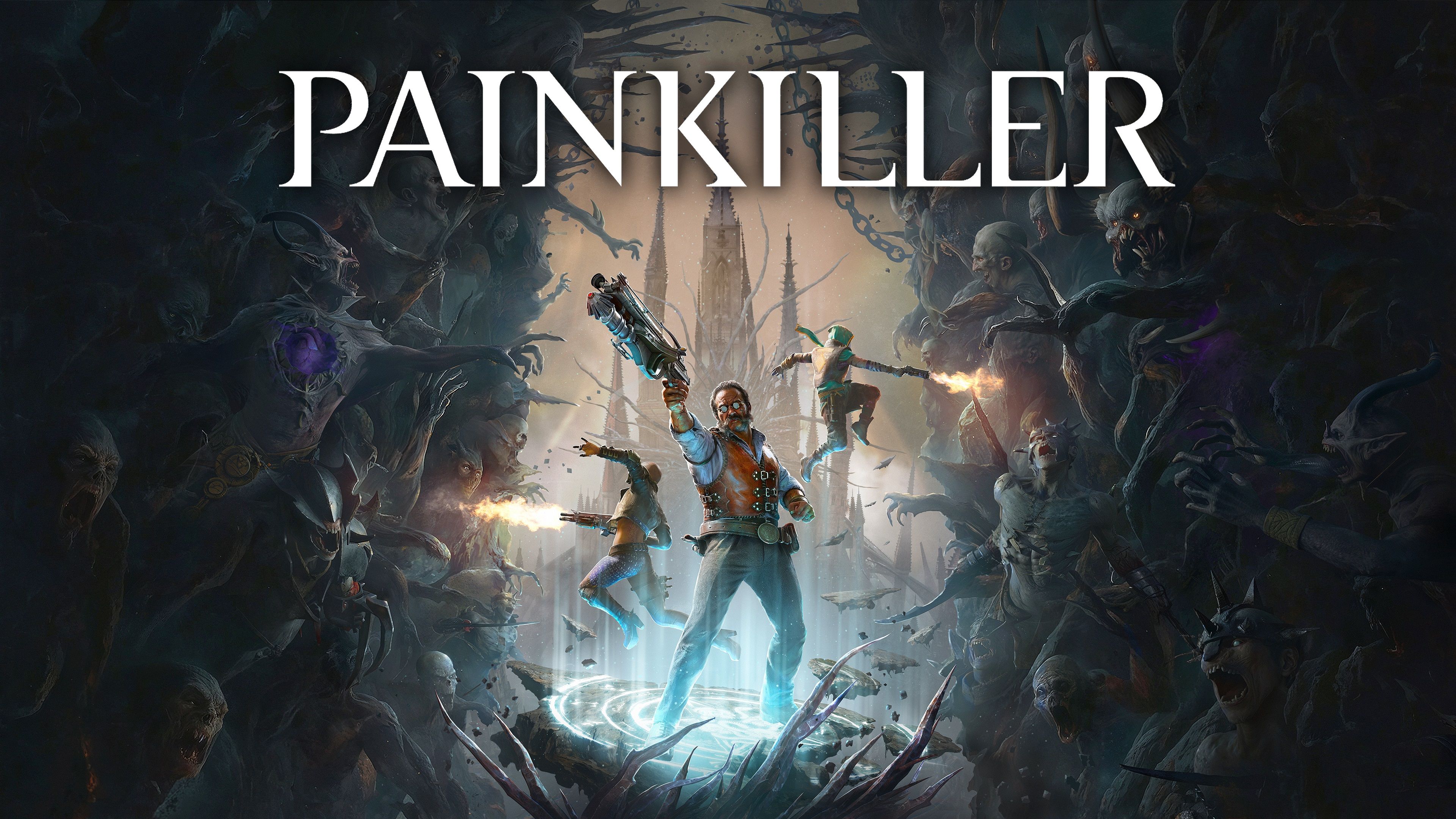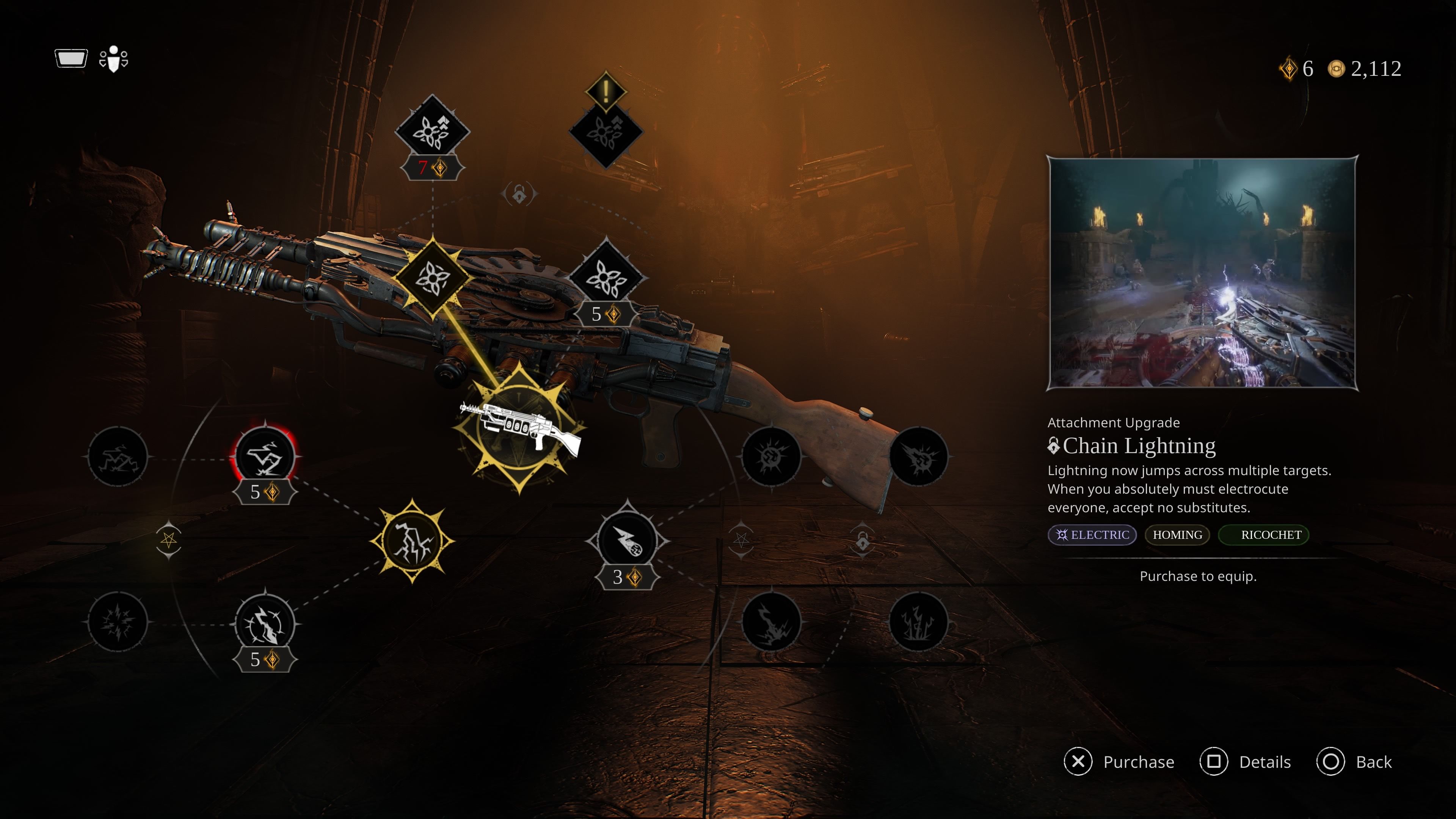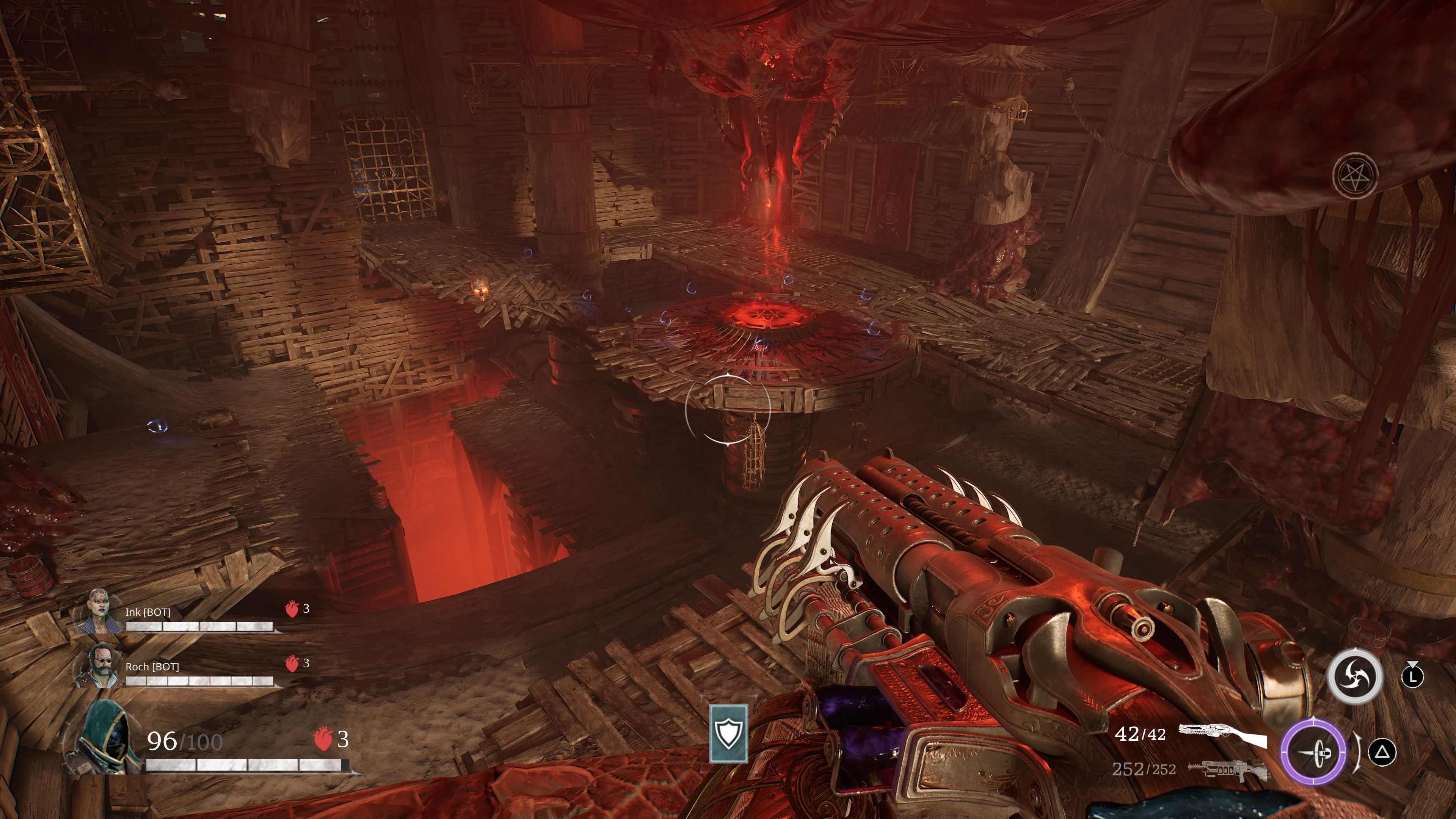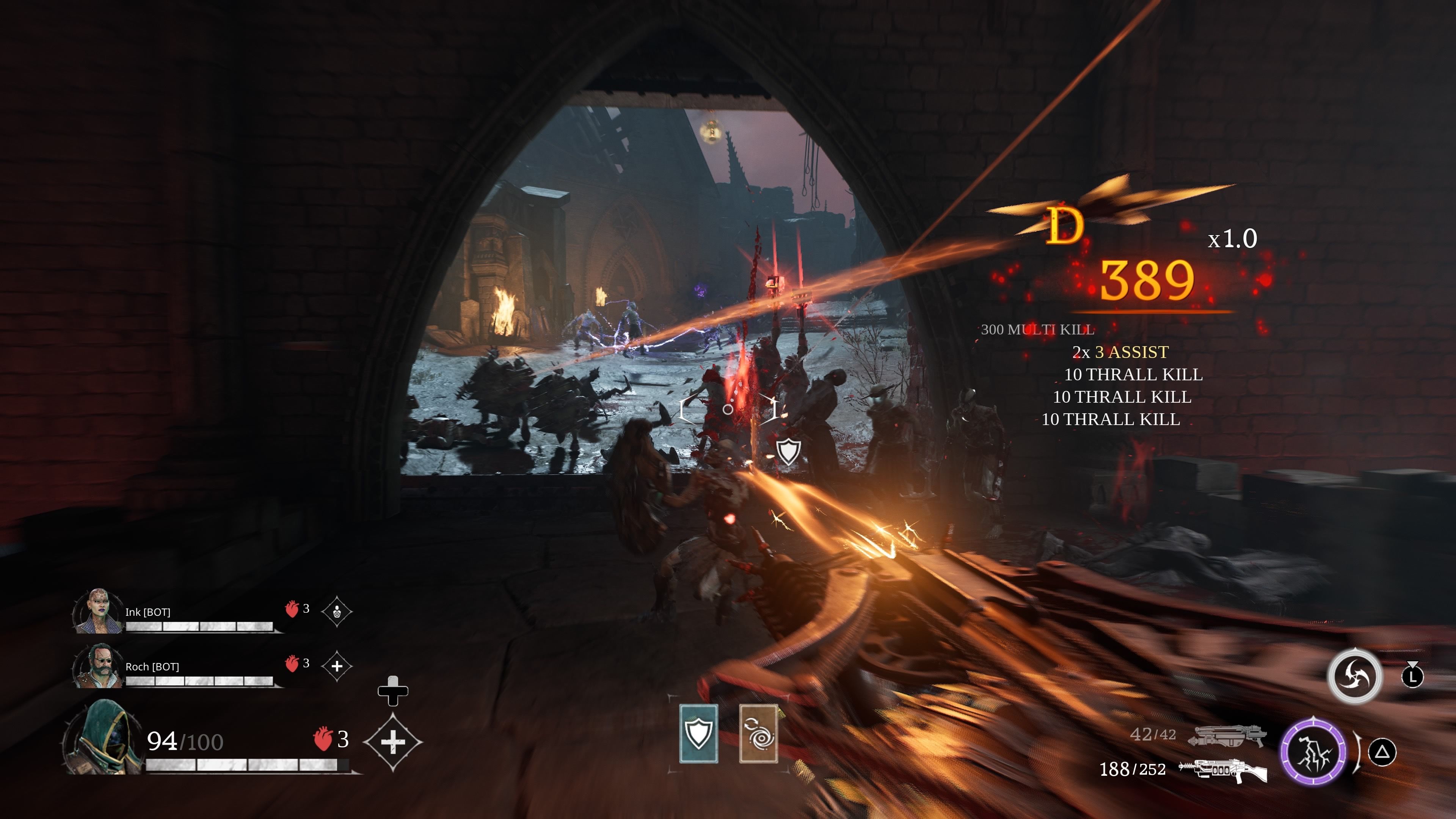
If you haven’t heard of it, Painkiller is a fast-paced action game, often called a ‘Boomer Shooter,’ that first came out in 2004. It received several expansions over the years, up until 2012. Different developers worked on each expansion, but the original game was created by People Can Fly, the studio also known for the first Gears of War.
Painkiller didn’t reach the same massive popularity as games like Gears of War, despite being clearly influenced by them. However, it remains a well-regarded series with a dedicated fanbase. That’s why it was exciting to hear that Anshar Studios, known for their work on Layers of Fear with Bloober Team, is relaunching the franchise in 2025 after years of inactivity.
To be clear, I’m not going to compare this 2025 game to the original from 2004. I see this as a completely fresh start with a new development team, and I want to evaluate it as such. It wouldn’t be fair to judge it based on expectations shaped by over two decades of nostalgia. Let’s look at this as a brand new first-person shooter releasing in 2025.
Despite the hype, Painkiller 2025 didn’t quite live up to expectations, even as a reboot of a popular series. It’s not a terrible game, but there’s not enough to make it stand out compared to other, stronger shooters available right now. Let’s take a closer look.
Stunning, But Uneven Presentation With A Dead End Story
Painkiller truly shines when it comes to its world design. The game features nine levels, divided equally among three distinct environments. These areas are visually stunning, with a polished and carefully crafted aesthetic. You play as a character trapped in Purgatory, fighting to prevent the fallen angel Azazel and his demonic Nephilim forces from taking over.
The game features a variety of unsettling environments, starting with a nightmarish, factory-like landscape, then moving into a creepy, dark cave system. Eventually, you’ll journey to a ruined Garden of Eden and the Tree of Knowledge. Visually, it’s stunning, but also deeply disturbing – it definitely makes me question some of the things I’m seeing! (Just in case my mom asks, I’m fighting demons, so it’s all for a good cause.)
The story is okay, but doesn’t really grab your attention. It’s a cooperative shooter – even if you play alone, you’ll have two AI teammates. You choose from four characters, each with a quirky backstory: a demon-fighting pharmacist, a former mercenary, a half-demon reverend, and a woman who apparently used to be royalty (though the details are a bit unclear).
The game puts you in a sort of limbo, where you’re fighting demons for an angel named Metatron to shorten your time there. However, things aren’t what they appear to be, and the story feels unfinished. It’s as if the game is incomplete and relies on future updates to provide a proper conclusion.
Painkiller has a noticeable comedic style, which some players will enjoy, but others might not. It’s filled with short, quirky lines, similar to what you’d find in a Marvel movie, or moments like the angel Metatron joking about Azazel being a bad poker player. Personally, I didn’t care for some of the humor – the line, ‘I’m Azazel, but you can call me daddy,’ was particularly cringeworthy. It felt a little too forced for my taste.
The sound effects are well-done, but I frequently encountered problems with audio distortion, sounds overlapping each other, and sudden, unexpected changes in volume. The music is metal inspired by the DOOM soundtrack, and while it’s okay, it doesn’t quite measure up and feels like a weaker imitation.
As a player, I noticed something really strange even when playing offline. My opponents and teammates would often seem to glitch and jump around, like their connection was bad – it just made fights feel clunky and unfair. Sometimes, enemies would stutter and move strangely, as if they were the only ones experiencing lag. It was weird because the online experience was pretty much the same, so it was odd to see those same little problems happen even when I wasn’t connected to the internet.
Absolutely Awesome Weaponry
Let me just say it: the guns in Painkiller are incredible! You start with the Electrodriver, which fires shurikens really fast. I thought that was the best weapon possible, but then I found a shotgun that packs a serious punch. It quickly became my favorite, until I unlocked the SMG – and wow, that one is amazing too.
The game features six weapons that are incredibly satisfying to use – truly one of the best arsenals I’ve experienced in a shooter. The PlayStation 5 version takes this even further with impressive details: each gun has its own unique feel thanks to the haptic feedback, and the adaptive triggers realistically simulate different firing mechanisms.
Honestly, it’s rare to see games really use the DualSense controller’s cool features these days, and I think that’s a shame. I’ll always appreciate when developers go the extra mile with the haptics and adaptive triggers – it makes such a difference! So many third-party PS5 games just don’t bother, so I really gotta give credit where it’s due when a team actually puts in the effort.

Each weapon can be customized with alternate firing modes and upgrades earned by playing well. These upgrades dramatically change how each gun performs, and you can even specialize weapons with elemental effects like ice, fire, or electricity through a skill tree. All of these added abilities have impressive visual effects.
Painkiller’s guns are freaking awesome.
The weapon designs are fantastic! They blend steampunk, Gothic, and sci-fi elements in a way that just works, creating some of the best-looking guns I’ve ever seen in a game. I honestly have nothing negative to say about them.
Unlocking all the weapon options feels like an unnecessary and tedious process. It’s hard to understand why four guns are locked behind in-game currency—even though you earn it by playing, not by spending real money—other than to artificially extend playtime. The issue is that it takes too long to unlock everything, especially if you’re using the currency for other things, and there simply isn’t enough content to justify the effort.
Not Enough Variety
Painkiller doesn’t offer a massive amount of content, no matter if you’re playing with other people, computer opponents, or a mix of both. Despite the series being famous for its large and challenging bosses, this installment only features three, each appearing at the end of a set of three raids within the game’s different environments.
It all just kind of blends together at a certain point.
The game features nine levels, but the core gameplay remains consistent throughout. You’ll battle waves of enemies in enclosed arenas, occasionally facing tougher elite enemies or mini-bosses. Progress is made by filling blood canisters with enemy kills to unlock gates, and by combining lanterns. Be prepared for a lengthy and tedious escort mission where you guide a vital ark to safety.
Overall, the game starts out with enjoyable combat, but it soon became repetitive. I found myself just running around arenas, shooting at enemies without much strategy, as the limited enemy types made everything feel the same after a while.
The game generally sticks to a straightforward path with few surprises. While you can find hidden rooms by activating pressure plates, they only offer minor benefits like extra money or health and ammo. There are also optional platforming sections for earning more currency, but they aren’t particularly enjoyable or rewarding.
The three boss fights feature impressive designs, but they’re either confusing to overcome or simply require a lot of damage before going down. Dodging their attacks also doesn’t feel very satisfying. What’s more frustrating is that because these levels are designed as raids, failing a boss means you have to replay the entire, often repetitive, level from the beginning to try again.
The variety wears out, so one playthrough of everything has been plenty for me.
The game now includes a Roguelike mode where you tackle randomly generated challenges in different arenas. You’ll eventually face one of the three main bosses, also chosen at random. While it’s a fun addition, it doesn’t really change the core gameplay or add anything truly new. It simply presents the same action and goals in a more straightforward, linear order.
I completed all the content, both in the game and online, in a single session. While the game offers different difficulty levels and cosmetic character options to collect, I don’t feel the need to replay levels or experiment with different characters. The gameplay variety isn’t strong enough to keep me engaged beyond a single complete playthrough.
We Have DOOM At Home

It’s hard to avoid comparing this new Painkiller, released in 2025, to the recent DOOM games. The gameplay – fighting demons with powerful weapons while listening to heavy metal – feels very similar. I usually don’t like drawing direct comparisons between franchises, but this one is hard to ignore.
Painkiller tries to incorporate cooperative gameplay with squads and raids, but it doesn’t really add anything special to the experience. Playing with real players or bots feels about the same, and honestly, it’s frustrating when you’re the only one on your team who knows what to do. I ended up preferring to play with bots, which makes you wonder what the point of having cooperative play is in the first place.
DOOM’s core gameplay – how it feels moment-to-moment and its basic structure – isn’t drastically different from Painkiller. Both games largely involve fighting waves of enemies in enclosed areas, constantly moving and shooting anything that approaches.

What really sets some games apart for me is how enemies are placed. Like, in DOOM, you’re swarmed by demons, sure, but it doesn’t feel random. It feels like the developers really thought about where they put each enemy, what that enemy can do, and how many you’re facing at once. It makes a huge difference in how the combat feels.
As a fan, I always felt like Painkiller just threw a ton of enemies at you and said, “Go crazy!” It could be awesome, blasting through hordes, but honestly, a lot of the time the screen just became this chaotic mess of explosions and numbers. You’re racking up combos, but you’re not even sure what you’re shooting half the time, it’s just pure, overwhelming action.
Even though Painkiller has great weapons and visually impressive environments, it ultimately feels derivative. It doesn’t quite forge its own identity and comes across as a less original take on DOOM, simply adding a few extra elements.
Closing Comments:
Painkiller boasts amazing weapons and abilities, but lacks engaging content to fully utilize them. I completed everything the game had to offer in a single play session, and despite some replay value, the repetitive missions make it hard to stay interested. While visually impressive, the game feels somewhat generic and leans heavily into the overused Marvel aesthetic. Simply put, it doesn’t offer much that DOOM doesn’t already do better.
Read More
- Jujutsu Zero Codes
- All Exploration Challenges & Rewards in Battlefield 6 Redsec
- Battlefield 6: All Unit Challenges Guide (100% Complete Guide)
- Top 8 UFC 5 Perks Every Fighter Should Use
- Best Where Winds Meet Character Customization Codes
- Upload Labs: Beginner Tips & Tricks
- Where to Find Prescription in Where Winds Meet (Raw Leaf Porridge Quest)
- Kick Door to Escape Codes
- Gold Rate Forecast
- Borderlands 4 Shift Code Unlocks Free Skin
2025-10-22 21:11